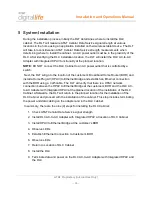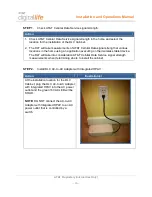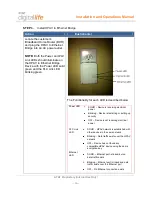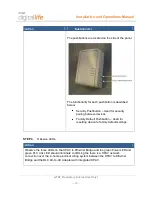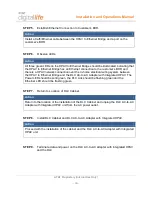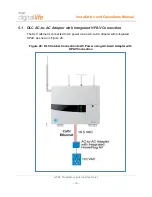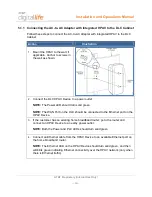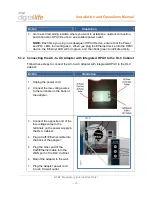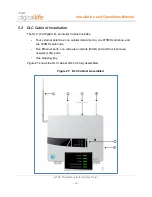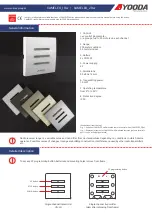
Installation and Operations Manual
AT&T Proprietary (Internal Use Only)
—28—
3. Verify that the desired change has been made.
WARNING!
The DLS supports Fire Alarm Verification for use with smoke detectors which can be utilized to
delay the transmission of a smoke alarm to the AT&T Digital Life Central Monitoring Center.
When smoke is detected, the alarm sounds a loud temporal 3 local alarm. Twenty (20)
seconds after the local alarm sounds, the built-in transmitter sends a digitally coded wireless
signal to the DLC. The wireless signal will be repeated every 20 seconds as long as smoke is
still present. In order to reduce the likelihood of reporting false smoke alarms, the Fire Alarm
Verification feature can be used. If the Fire Alarm Verification feature is enabled, the DLC waits
for two smoke detector signals within 25 seconds before a smoke alarm is reported to the AT&T
Digital Life Central Monitoring Center.
In addition to the photoelectric detector, the unit contains an integrated fixed 135° temperature
and rate-of-rise heat sensor that will send an alarm signal based on temperature detected.
3.4 Troubleshooting Wireless Devices
DLD can be utilized the by a DLT to assist in troubleshooting issues that may arise
during the installation of a wireless device or devices, such as window/door sensors and
keypads. Within DLD the DLT can enable the monitoring of received wireless signal
strength in the DLC for selected wireless device or devices. The possible values are
presented from highest signal strength to lowest signal strength:
Unacceptable (Too Hot)
Best
Good
Acceptable
Low
Weak
These values apply to both 433MHz and 915MHz devices. In general, if a DLT observes
a Signal Strength of “Low”, the DLT will install a repeater.
As depicted in Figure 20, Figure 21 and Figure 22 under the Devices tab the DLT will
select the Device Information screen for the specific wireless device that they want to
troubleshoot and enable Signal Strength monitoring on the DLC. The DLT can repeat the
steps for other devices.





















